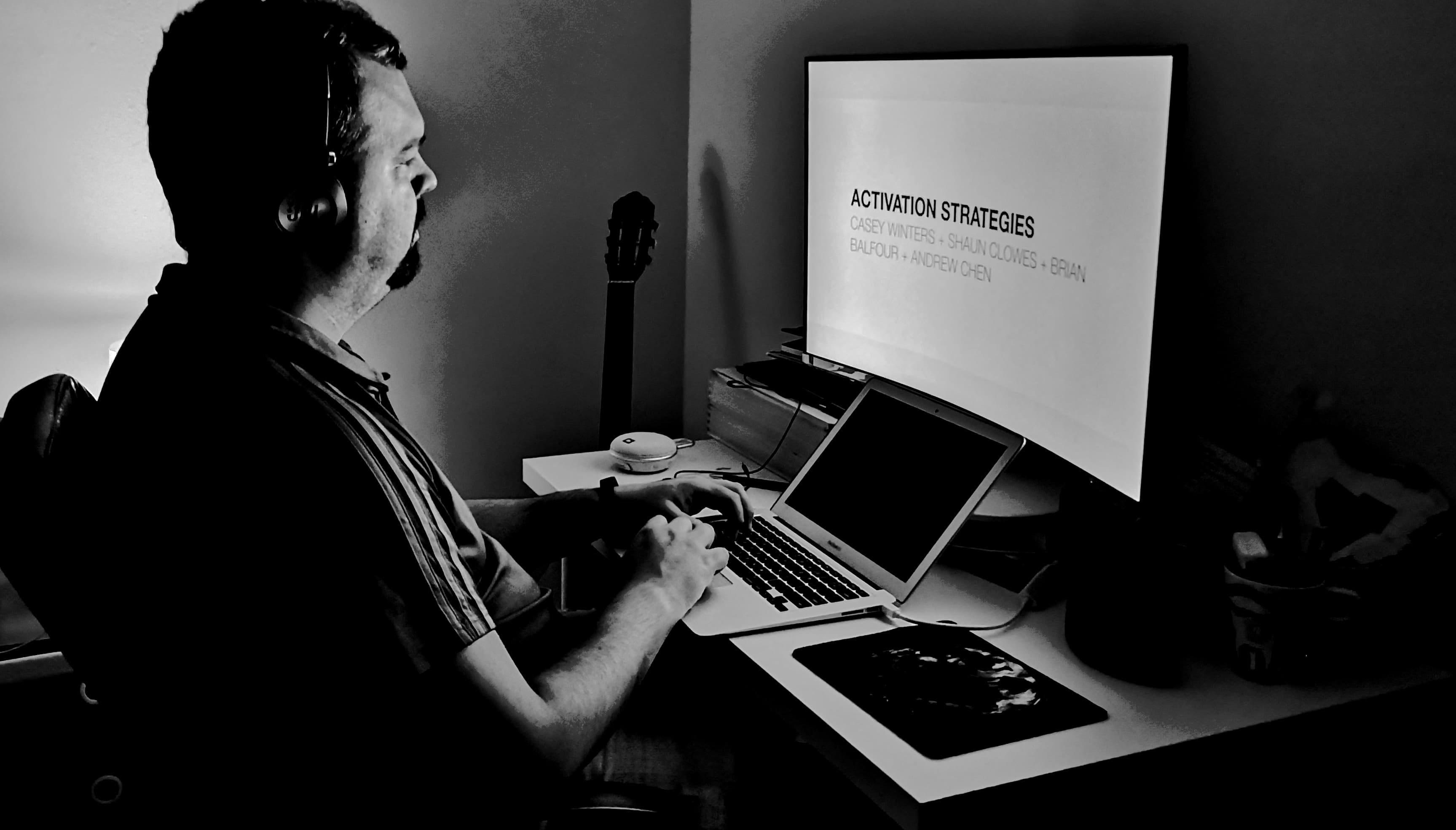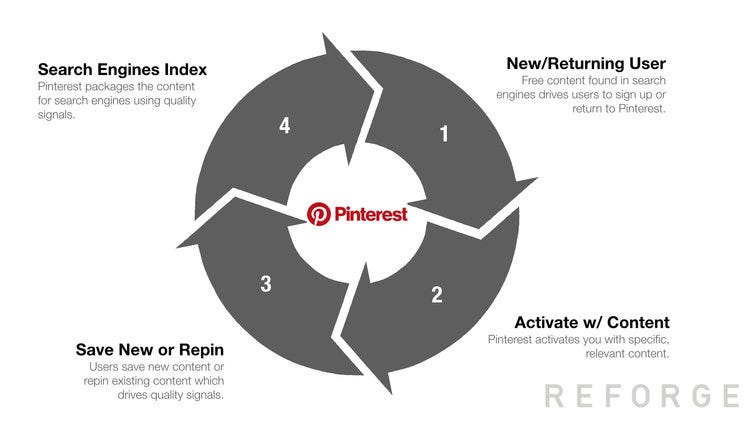What I’ve learned from spending six weeks with the world’s best Growth practitioners at the Reforge Program
This article was originally posted on my Medium profile.
A couple of weeks ago, I finalized the “Retention+Engagement” track of the Reforge Program. Although short, it was by far the best course I’ve ever taken since I started my career in the tech industry ten years ago.
Now that I’ve finished it, I remember that I tried to find other people’s testimonials to try to get a glimpse of it was worth it. And now that I’ve been through it myself, I realized it’d be nice to share how my experience was and maybe help other applicants in the future.
So, why did I apply in the first place?

Although I’ve been on this gray between Marketing and Product that we now call Growth for years, I still missed a lot on the strategies, the “whys” and the operational details around Growth — , especially on Retention. Combining that with the fact that I don’t have a lot of contact with many top-tier Growth professionals to learn from, choosing Reforge came naturally to me as the best option to accelerate my development in this field.
“(…) it looks like we forgot that in order to achieve growth we need to accumulate customers and not only acquire them”
I knew it wasn’t going to be easy to get accepted, though. I know a handful of very talented people who applied and were not accepted because they were considered not experienced enough or other reasons. The cost was also something to consider ($3,495 for a single seat and $2,995 per person for teams of 3+), but after months of looking around for alternatives, I knew that if I wanted to accelerate my learning curve I had to do it.
On February 27th, I applied to Reforge. Then on March 14th, I received this:

Why I chose the “Retention+Engagement” track?
From my years in this industry, I had the chance to work with companies of different types and sizes. With time, I saw with my own eyes that those who were (1) customer-obsessed and (2) as worried about Retention as they were with Acquisition, were the ones who eventually won.
Now that I’ve been through this program and doing a lot of digging myself on my current job, I believe that at some point, you must prioritize Retention over Acquisition. While it’s possible to buy your way up to the top if you have the big pockets, doing a great job from the start has always proven to be much more difficult. Building on the quote from Sean Ellis, trying to grow a product that lacks retention is like trying to fill a leaky pool with a drilled hose: you can try to pump as much water as you can, but it will come at an extremely high cost (and that’s only IF you got both time and money to waste, which isn’t often the case).
We (marketers and product people) need to wake up and realize it’s 2019: there are so many tricks and ways to acquire traffic overnight that it’s now common to see startups coming out of the blue and acquire dozen of millions of users in just a few weeks. So in this new scenario, Acquisition is no longer the challenge: Attention is.
“The most important asset in our new ecosystem is time. (…) The day of advertising and stealing somebody’s time is over” — Garyvee
And you can only have your customers attention by building something super valuable and engaging. There’s just no other way.
In the end, that’s why I chose the Retention+Engagement track.
And how does the program work?
Every week you get:
- A new chapter with at least five videos of 15–25 minutes each about the week’s topic, followed by a framework on how to diagnose and apply the things you learned on your product
- Two or three interviews with industry experts: usually Directors or C-level people from companies like Atlassian (Shaun Clowes), Reddit (Vaibhav Sahgal), Grubhub (Casey Winters), LinkedIn (Liz Li), Duolingo (Gina Gotthilf), Patreon (Manuel Andere), Instacart (Bangaly Kaba), among others.
- A weekly event — which you can attend online via Zoom or live in San Francisco — where the week’s content is discussed in detail. There’s also always the presence of a special guest who would then show how she/he applies the concepts we learned on their products.
Depending on the week we’d have different activities: from proposing Activation solutions based on real data from a SaaS startup; analyzing business cases hypergrowth companies; or doing group brainstorm sessions with super smart people on Activation, Engagement, and Resurrection.
Reforge Forum: the Stack Overflow for Growth professionals
Beyond the content of the program itself, all alumni have access to a forum where one can ask questions around Growth and Retention to other participants. If they can’t help, then Brian himself or one the others try to help. That’s something I didn’t even know before signing up, and it blew my mind when I realized what pool of wisdom I got access.
Having the opportunity to discuss Growth and Retention topics with all these extraordinary people is an incredible learning opportunity. That means you get to interact with people from companies like Paypal, HBO Go, SquareSpace, Zendesk, Slack, Delivery Hero, We Transfer, and so many others, from asking simple things like how to improve performance marketing campaigns to how to structure and scale growth teams on big organizations.
On top of that, the content itself is dense, and you’ll probably have to watch it at least two or three times to be able to absorb everything. In the end, I had to dedicate twice as many hours (10 to 12 hours a week) as I initially planned to be able to consume everything in “real-time.”

Takeaways from the program
As you can imagine, I can’t go into a lot of detail without sharing the content itself so I’ll try to contain my list to things that affected my perception and mindset around Growth and Retention.
1) Retention is the output
That means you can’t optimize it directly: instead, you will need to work on one of the inputs if you want to increase your Retention.
Retention (output) = Activation, Engagement, Resurrection (inputs)
This sounds super obvious, but it may be the most important thing to understand as it puts you on a different mindset. Putting it into simple words, it means that if you want to increase the retention, you either have to:
- Work on your Activation, to make sure your customers have the best possible first experience with your product. That is the most crucial stage of your customer journey as you’ll most likely lose most of your customers there — think about any retention curve: the steepest part is always on the very beginning of it.
Something that I didn’t know was that Activation is not only about onboarding: it is about helping your customer from the moment she starts using your product, then connects with your core value proposition — the famous Aha-moment — until the moment building the habit around your product.
Having this in mind changes how we think about what’s an active user (not only someone who created an account and did something but preferably someone who regularly comes to re-use your product), setting a new standard into how you evaluate how good are your Acquisition and Retention is; - Make sure you have best-in-class Engagement strategies to keep your customers happy and engaged for the longest possible period. Instead of blasting your audience with generic newsletters and push notifications, Brian goes into detail on how to use one of the four main Engagement strategies (Adding Use Cases; Increase Frequency, Increase Feature Usage; Increase Intensity) that builds on the top of your customers’ natural frequency;
- Learn to separate those who can’t be resurrected from those who can and find effective ways to resurrect them. But, in the end, the best resurrection strategy will always be prevention.
What I really liked about this module was the rationale and all the analysis to explain why resurrection is not a big opportunity as it usually looks like: as you deep dive on the numbers, you’ll see that it’s mostly a high-cost+high-risk initiative that should be avoided until you have best-in-class Activation and Engagement in place.
2) You don’t benchmark Retention: you set it as big as your ambition is
Each product is unique. The chances are that you have a different audience with a unique way to solve your customer’s problem and a particular set of metrics on how to measure its success.
Although benchmarks can give you a high-level view of the performance of your competitors, it’s not smart to copy it as there’s a lot under the hood that you may not understand.
Instead, you should work backward from your company’s ambition and then see what’s should the optimal retention rate that will help you reach your long-term goals. Multiplying your total addressable market with your target market share, LTV, and possible retention rates will give you a clear picture of where your retention has to be to achieve your ambition.
3) Revenue is the output of Engagement
Just as Retention, you can’t optimize for Revenue as it’s merely a reflection of a user’s engagement and how much value they’re extracting from it. The more value they extract, the higher the value they tend may be willing to pay.
Instead of trying to optimize for revenue itself, you should find ways to deepen the engagement of your customers (not all of them, only those who are eligible), which most frequently happens when they use more advanced features or they use your product more often, which will then naturally lead to higher revenues.
In the end, the more customer-centric you are, the higher the chances of increasing your revenue.
4) Retention accelerates everything else
Being a “Retention Evangelist” myself, I know very well how difficult it is for others to understand how Retention drives growth as much as Acquisition does. It’s like we forgot that to grow, we need to accumulate customers and not only acquire them.

But apart from the fact that growth is nothing more than an accumulation of customers we forget that Retention drives Monetization, Acquisition (especially on User-generated content products and Marketplaces), accelerates your Marketing Payback period and helps you build competitive muscle.
So, as counter-intuitive as it may sound at first, having excellent Retention will not only accelerate your accumulation of customers but also help you bring more customers for less Marketing dollars.